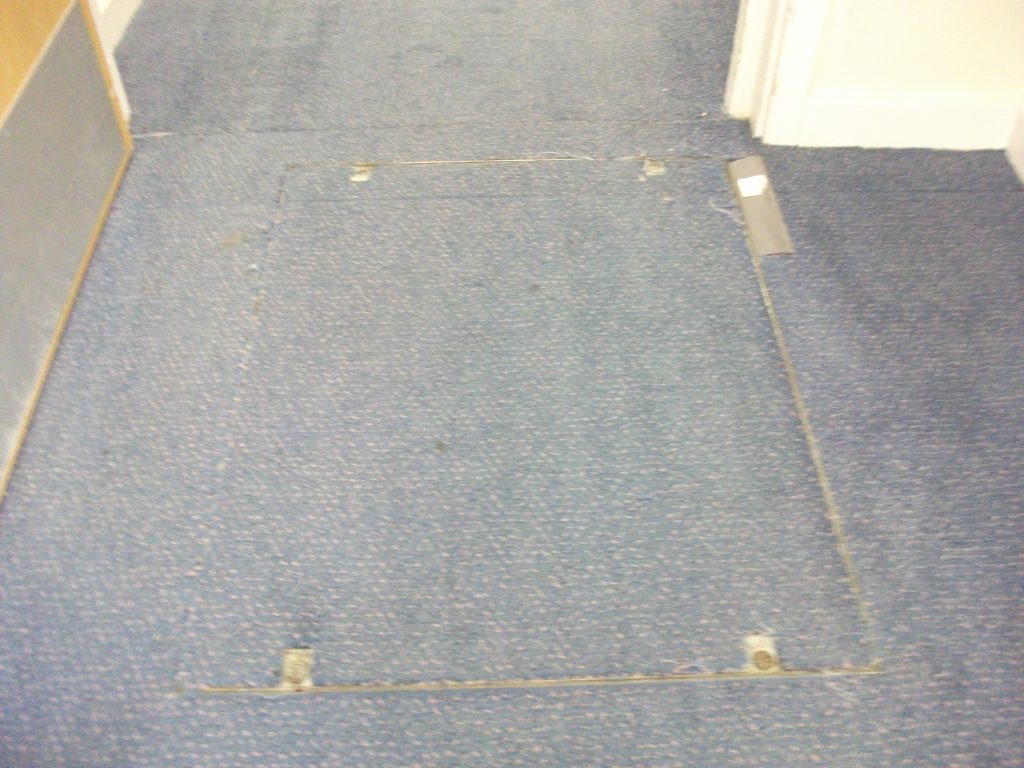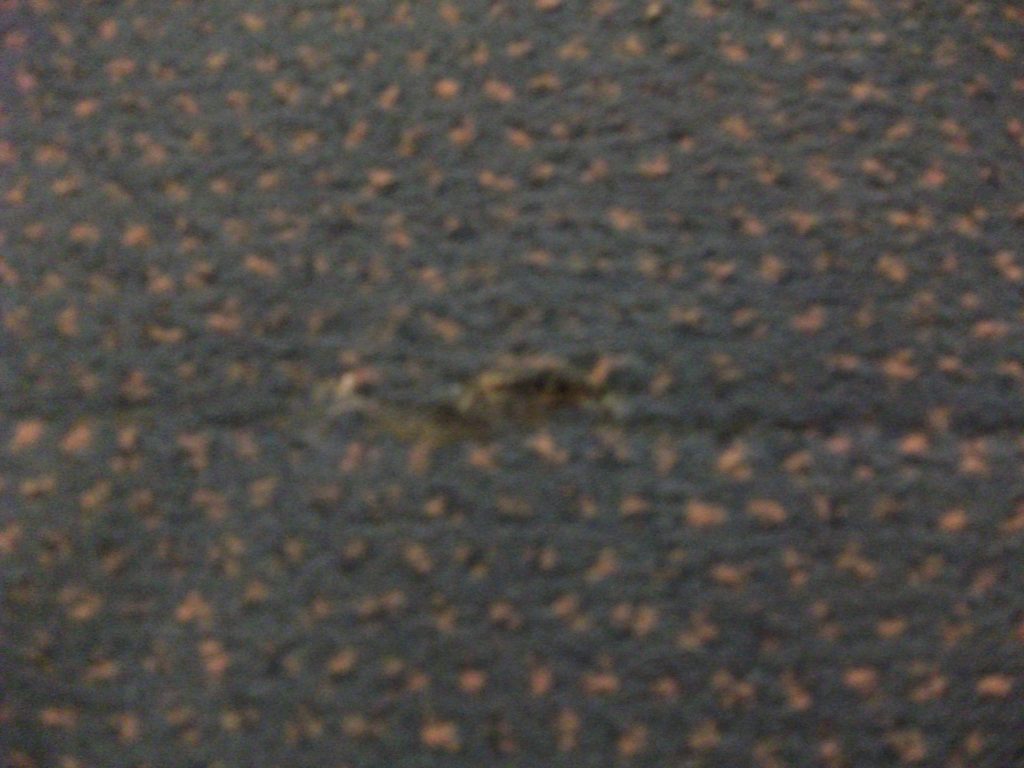Fraying Carpet
Carpet type: Cut pile.
Fibre: Polypropylene (Olefin)
Backing: Rubber
Colour: Blue with coloured specks.
Pile Height: 5mm
Tufts per Sq In: 36
Installation: Stuck down with adhesive to a concrete floor.
Introduction: The client is very concerned as to how the carpet is wearing and the workmanship of the installation.
1. Visual inspection
The traffic areas of the carpet are showing signs of severe pile flattening. This is shown by light and dark patches along the main corridors as shown below.

The corridors of the building are obviously very high traffic areas, with staff, residents, visitors’ including wheel-chair users.
Pile flattening is a shade change in the carpet which arises when the carpet is walked upon. When a carpet is new the pile stands almost erect and light is reflected from the cut end of the tuft. Upon trafficking the pile flattens and light is now reflected from the sides of the carpet.
This gives the carpet a dull, worn and lackluster appearance. A 100% polypropylene pile carpet tends to suffer from flattening more than other types of fibre or mixed fibre carpets. Higher specification of the carpet weight, pile density and pile type can help reduce the impact of flattening. The only consolation is that the carpet should not look or degrade any worse than it does now for on-going usage, notwithstanding the issues of the installation as discussed below.
The backing of the carpet is of a low specification rubber backing.

There are rectangle removable covers along the corridors, the carpet had to be installed over these with access to remove the covers. As can be seen from the photo below, the edges of the seams are starting to fray and look very untidy.

There are also many seams/joins along the corridor a number of which are insecure. Unfortunately, across some of the seams there appears to be glue adhesive that has melted some of the carpet pile and hardened onto the pile, damaging the pile.

Our comments are as follows:
Qualifying a carpet for a particular commercial end-use application has for many years been based on a carpet’s performance properties as they pertain to “wear”, which include considerations for the carpet’s pile yarn weight, density, fiber type characteristics, and backing construction, with additional consideration given to carpet color, texture, and pattern.
If the specification of a carpet is not high enough for its end-use application, premature wear may result.
We have measured the surface pile weight (about 490 g/m2), pile thickness (5.5 mm) and pile density. On the basis of these figures this polypropylene carpet seems underspecified for its use. Hence the flattening.
Conclusion, by Kevin Goodwin:
There are two questions to answer in this report; the specification of the carpet installed for its intended usage, and the quality of the installation.
As regards to the type of carpet installed, I would deem this carpet inappropriate for the type of usage it is expected to endure. I do not know who took the decision to choose this carpet, i.e whether it was recommended by the retailer after a survey of the premises, or whether the client made their own decision. If the former is true, then I would deem this as poor advice and specification by the retailer.
The installation of the carpet is fairly inconsistent. Some areas are fitted very well, but other areas are poorly installed and suffer from low specification, poor fitting and heavy traffic.